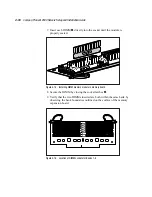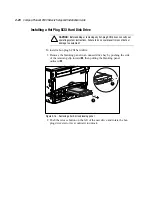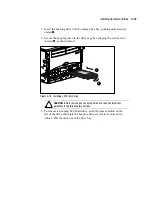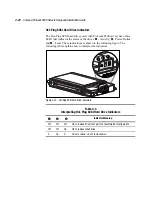
Installing Hardware Options
4-29
Compaq Confidential – Need to Know Required
Writer:
Rick Chew
Project:
Compaq ProLiant 8500 Servers Setup and Installation Guide
Comments:
Part Number:
323333-001
File Name:
e-ch4 Installing Hardware.doc
Last Saved On:
5/5/99 10:11 AM
Microsoft Windows NT 4.0
Supported PCI Functionality
Compaq PCI Hot Plug support under Microsoft Windows NT 4.0 provides
hot-replacement for Compaq boards. An adapter equipped with a hot-plug
aware device driver can be replaced without shutting down the system. If the
adapter is part of a redundant pair, the failed adapter can be replaced while
users continue to communicate with the server through the additional adapter.
Once an adapter has been replaced, PCI Hot Plug technology enables you to
bring the PCI slot back into service.
NOTE:
Under the current version of Windows NT 4.0, hot-addition is not possible. Empty
slots are powered up at boot and opening the slot release lever will cause the slot to be
powered off. If you add a board in this manner, you will not be able to power up the slot.
Software Components
The software components include the Compaq PCI Hot Plug Utility, the
Compaq Remote Monitor service (CPQRCMC), the Compaq Systems
Management driver (SYSMGMT.SYS), and hot-plug aware drivers.
The Compaq PCI Hot Plug Utility allows you to monitor and control PCI Hot
Plug slots. You can accomplish the following tasks:
■
View the current power and fault status of all PCI Hot Plug slots in the
system.
■
Turn the power on and off to a slot to permit controller replacement.
■
View the name, driver name, paired state, and status information about
the controller in a slot.
■
Manage the hot-plug slots of the remote system, as well as the local
system.
The Compaq Remote Monitor Service (CPQRCMC) is central to the operation
of PCI Hot Plug technology. CPQRCMC acts as the connection point for all
hot-plug communications. By using the CPQRCMC service as the primary
interface, Compaq delivers true PCI Hot Plug capability without requiring hot-
plug support directly in the Windows NT operating system.
















































